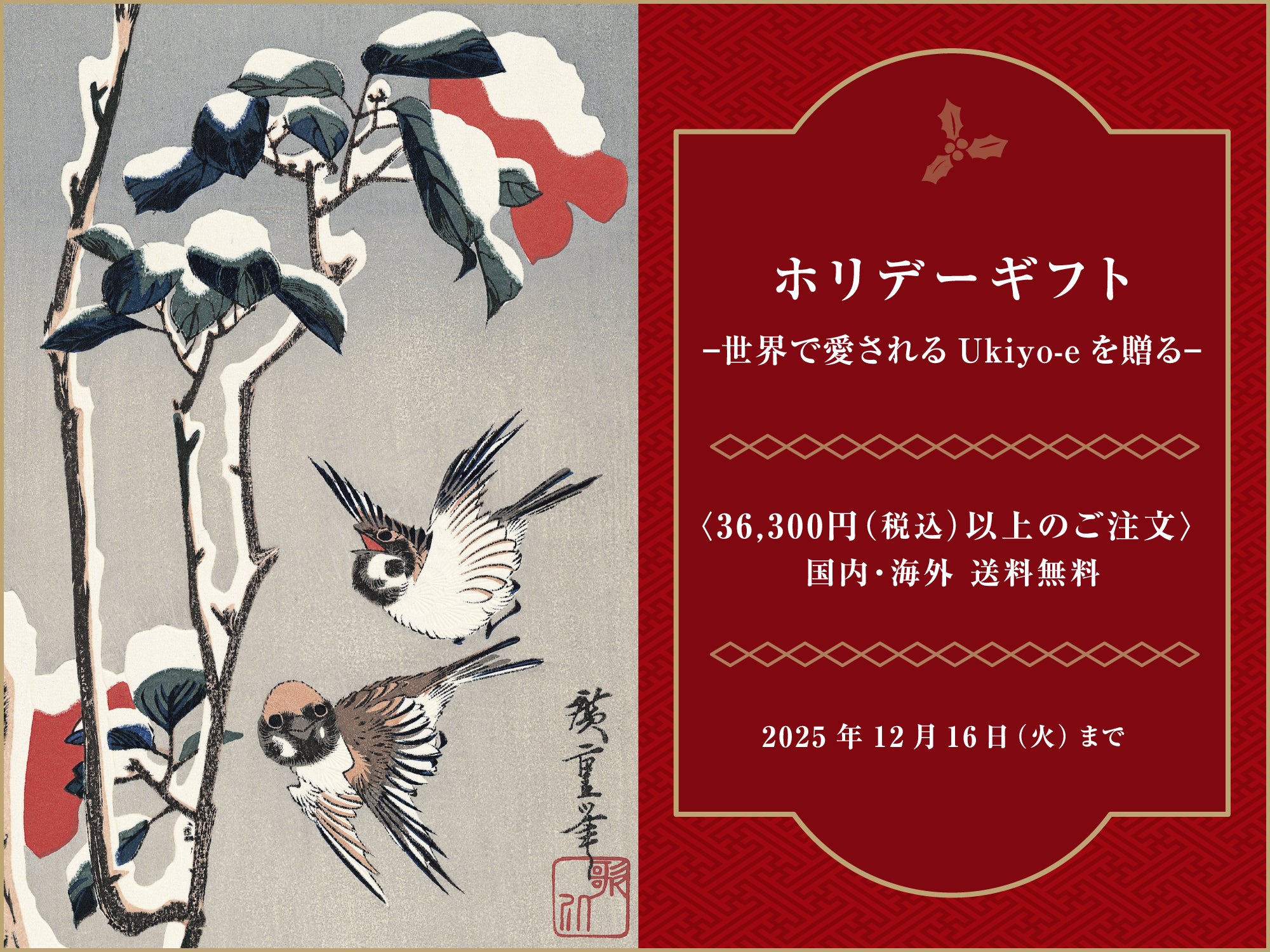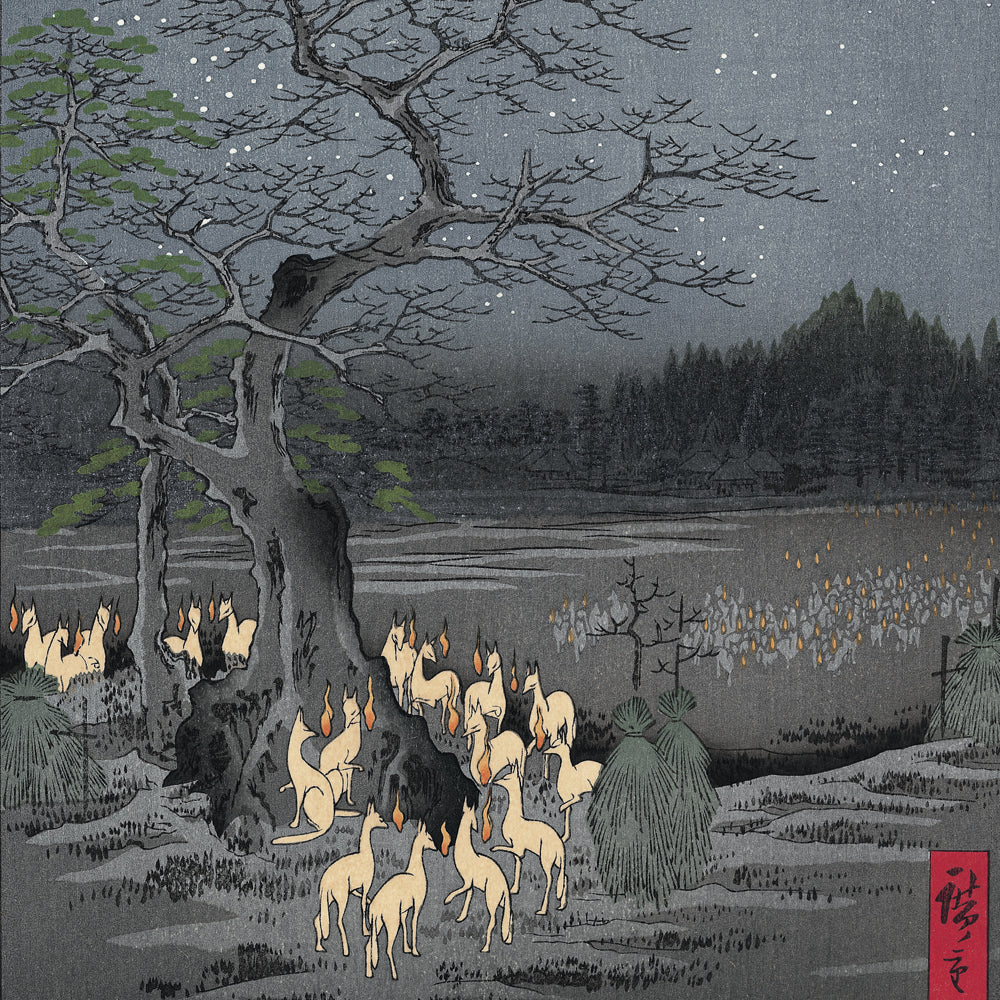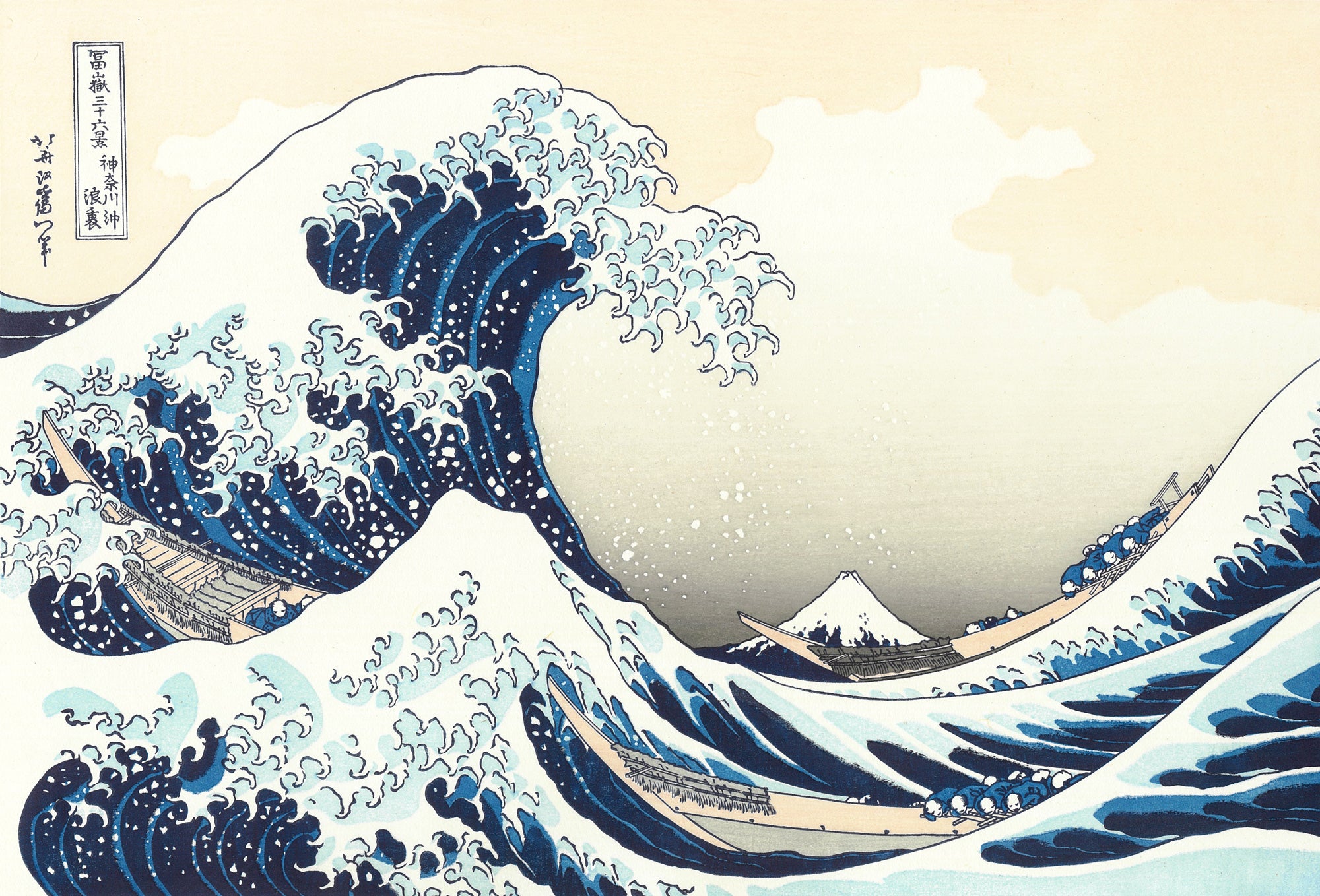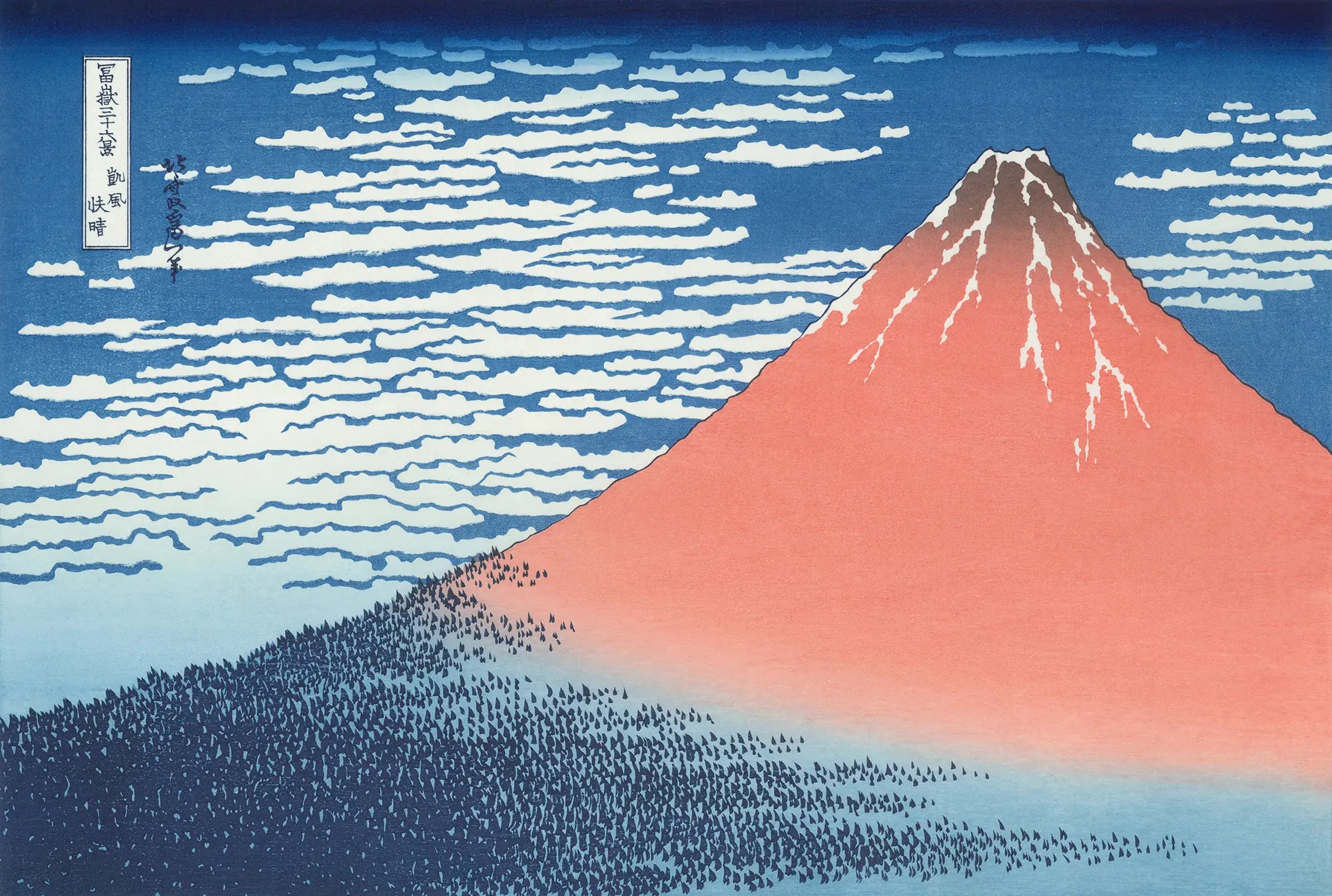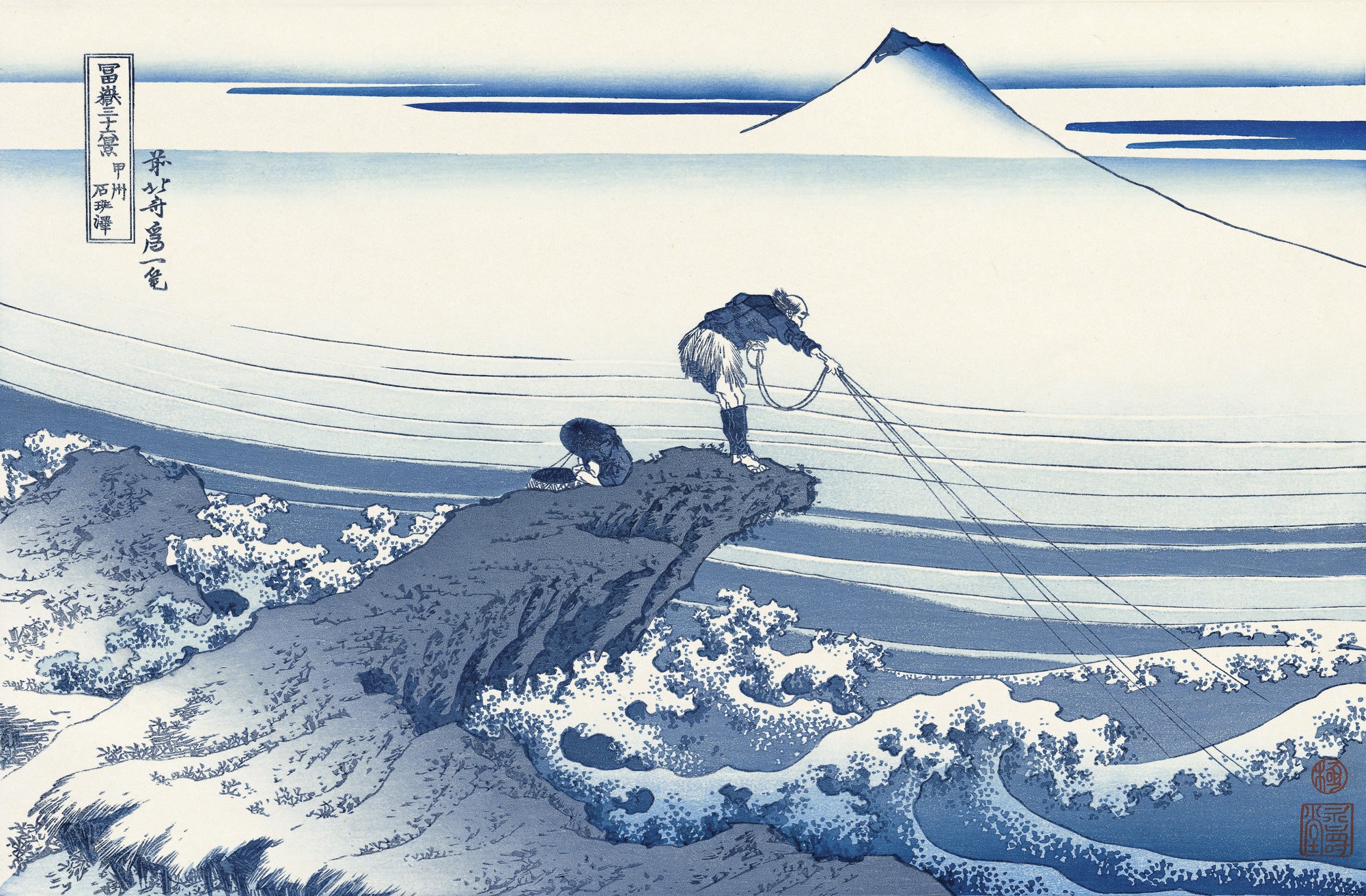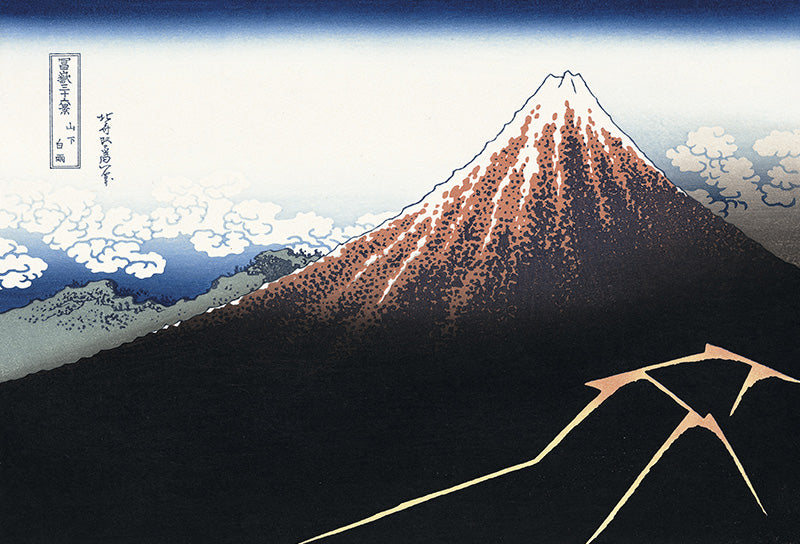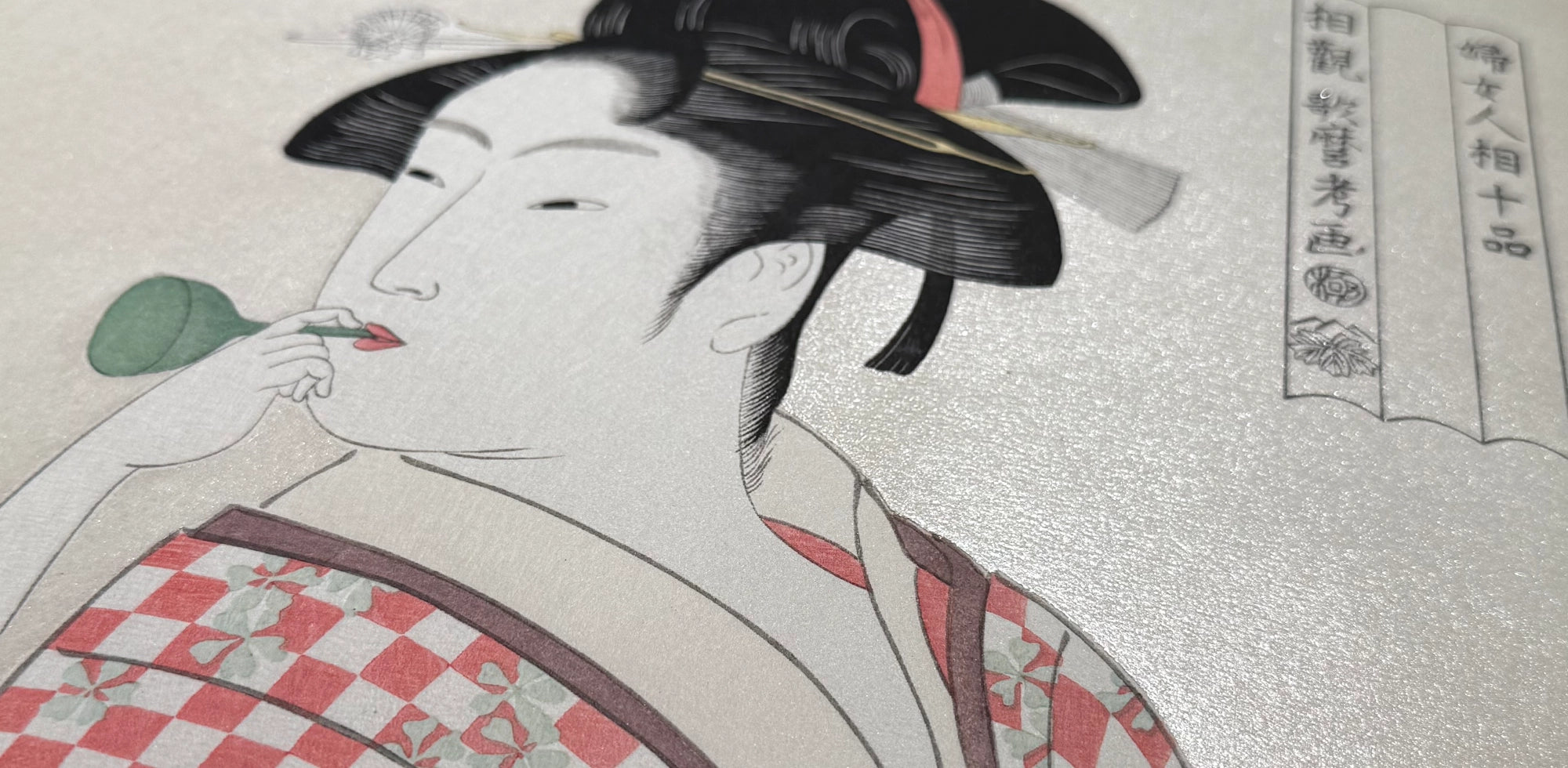
[Utamaro] Works with mica (kira) printing
The technique called kirabiki, which is used to give a shiny finish to the background of portraits, is believed to have been developed by Utamaro and Tsutaya Juzaburo, the publisher who discovered him. In the kirabiki process, mica powder and animal glue are mixed to produce kira, which is applied with a brush to give the surface a shiny finish. Utamaro's bijinga (pictures of beautiful women) with shiny backgrounds created by applying kira to Japanese paper (washi) became a sensation in Edo.
Under the Kansei Reforms (1787-1793), people were urged to live frugally, and restrictions were placed on the production of ukiyo-e as well. Even in such times, Utamaro continued to pursue extravagant and appealing bijinga. One of the fruits of such efforts was the bijinga with kira backgrounds that mesmerized the people of Edo.
